Buyers Guide to Cycling Shoes
If you have embraced cycling in all of it's glory, the chances are you have got or are thinking about getting cycling specific shoes. But understanding your boa's from your ratchet closures, or the difference between your reinforced Nylon and Carbon composite can be a bit daunting. So we've put together the basics thinks to look out for in a guide to cycling shoes.
A Question of Style
When it comes to cycling shoes, there are lots of different styles and shapes to think about. Shoes can be categorised as Road, MTB (off-road), Triathlon or Touring. There is often very little difference in the upper part of these shoe, with a range of different closure systems available. However, the noticeable difference will be in the design of the outsole. There are two main sole types - road or off-road.
Uppers
The material used for the upper part of cycling shoes can greatly vary. Different factors can come into play such as style, price and weight. A lot of shoes use a synthetic microfiber because of its durability. Microfibre tends to be hard wearing and ideal to cope with the riggers of clipping in and out of pedals or shoes rubbing against the chain or chainset. However, what Microfibre offers in durability, it tends to lose in weight as these type of shoes are not always the lightest. Its a good idea to look out for uppers with perforation holes as these help with ventilation.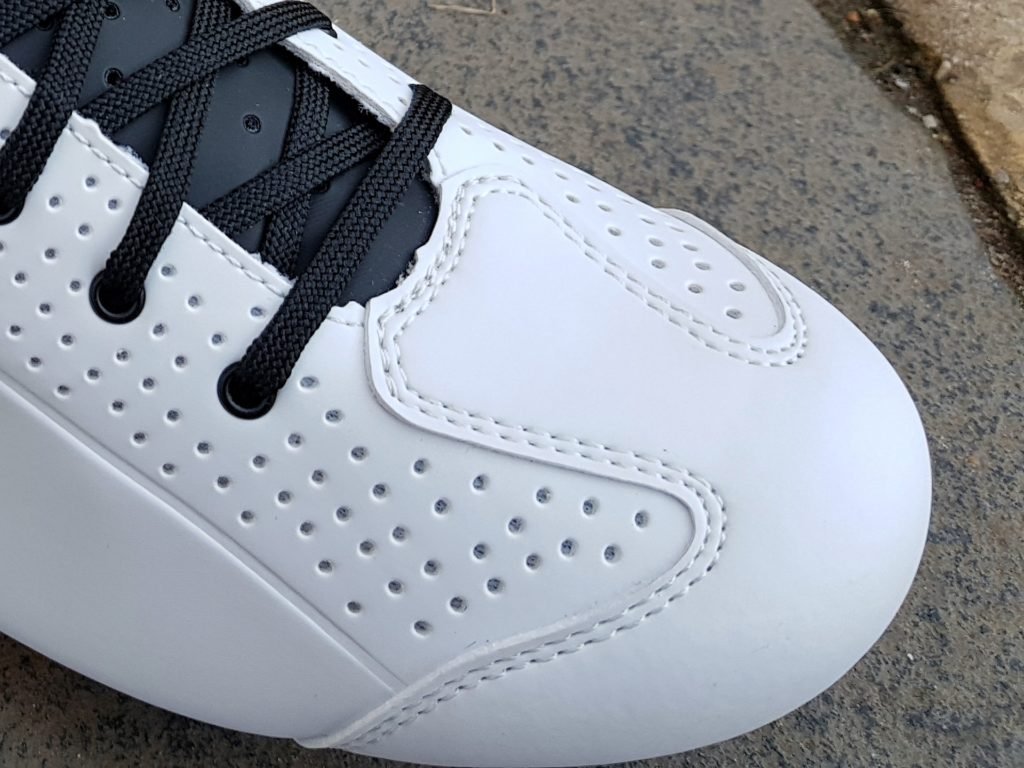 A much lighter option would be a mesh style upper or a shoe that incorporates both. As well as being much lighter in weight, this type of upper provides much more ventilation. Better ventilation will help to keep your feet cool on longer rides or during the summer months. Some manufacturers will use a Thermoweld mesh construction on their more expensive or race shoes.
A much lighter option would be a mesh style upper or a shoe that incorporates both. As well as being much lighter in weight, this type of upper provides much more ventilation. Better ventilation will help to keep your feet cool on longer rides or during the summer months. Some manufacturers will use a Thermoweld mesh construction on their more expensive or race shoes.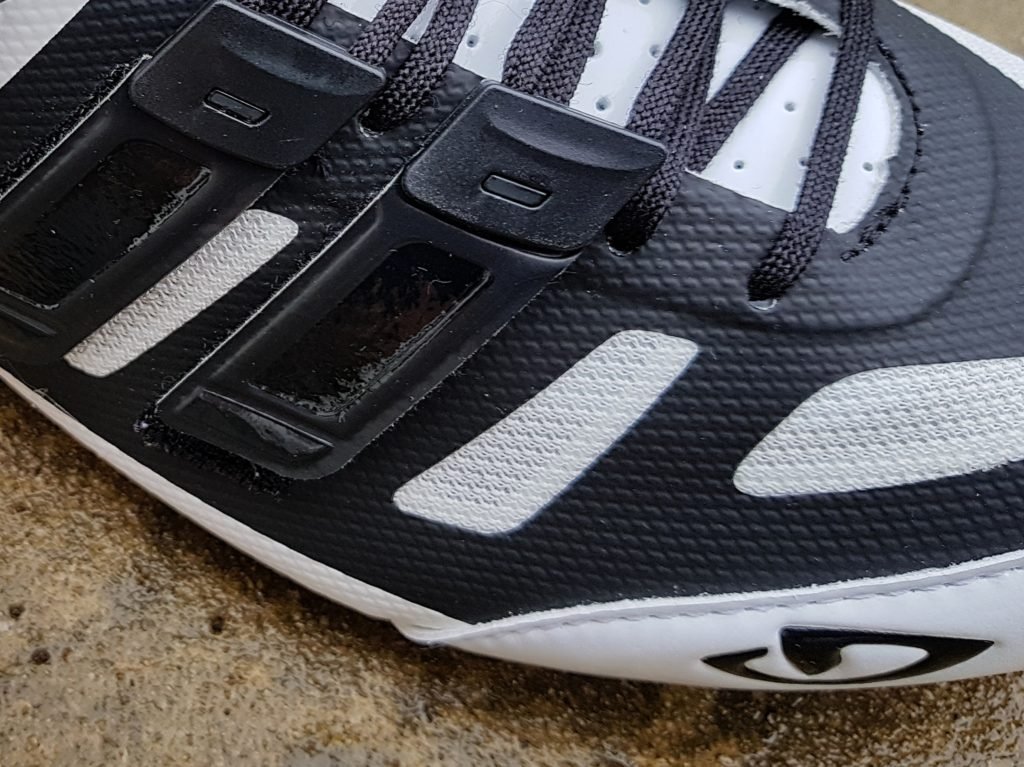
Closure Systems
There has never been a bigger choice of closure systems for your cycling shoes.Velcro - This is the most simplistic of shoe closures. Velcro fastening is lightweight and quick and easy to adjust during a ride. Triathlon cycling shoes tend to use Velcro fastening for this exact reason. The downside is that over time, Velcro can wear and lose it's stick.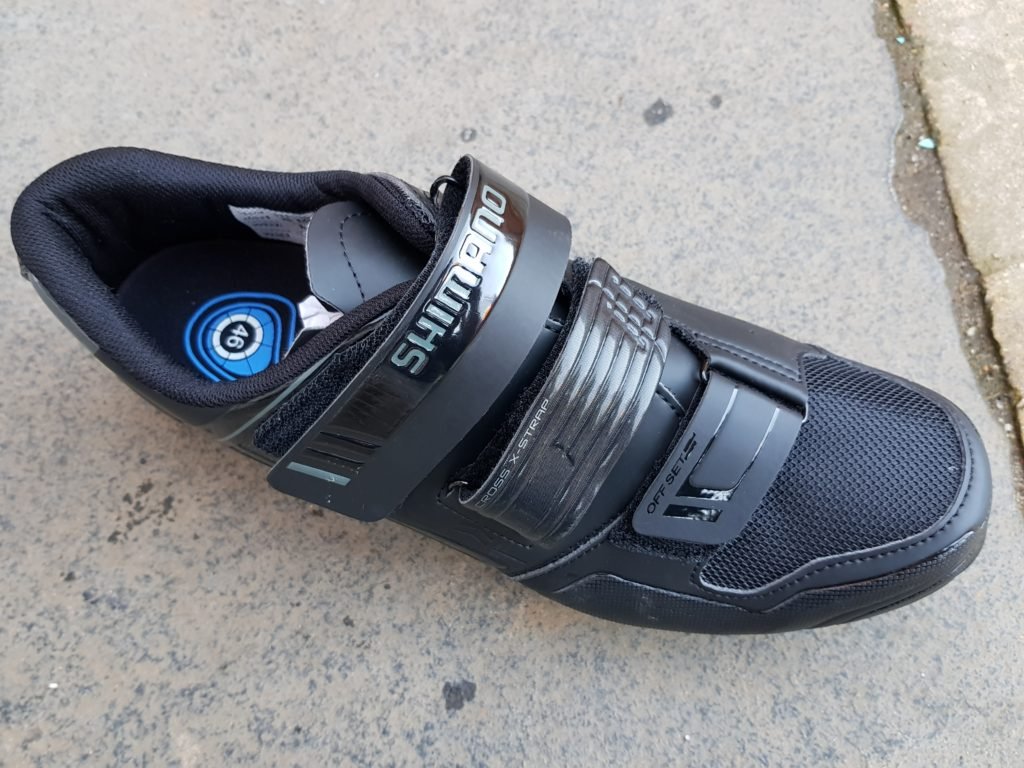
Ratchet - The ratchet (or buckle) closure has been a popular fastening on cycling shoes for the last decade. The system features a 'notched' plastic strap which threads through a ratchet buckle. There is usually a lever to tighten and a button to release the tension. Once connected, a ratchet fitting is secure and quick to adjust.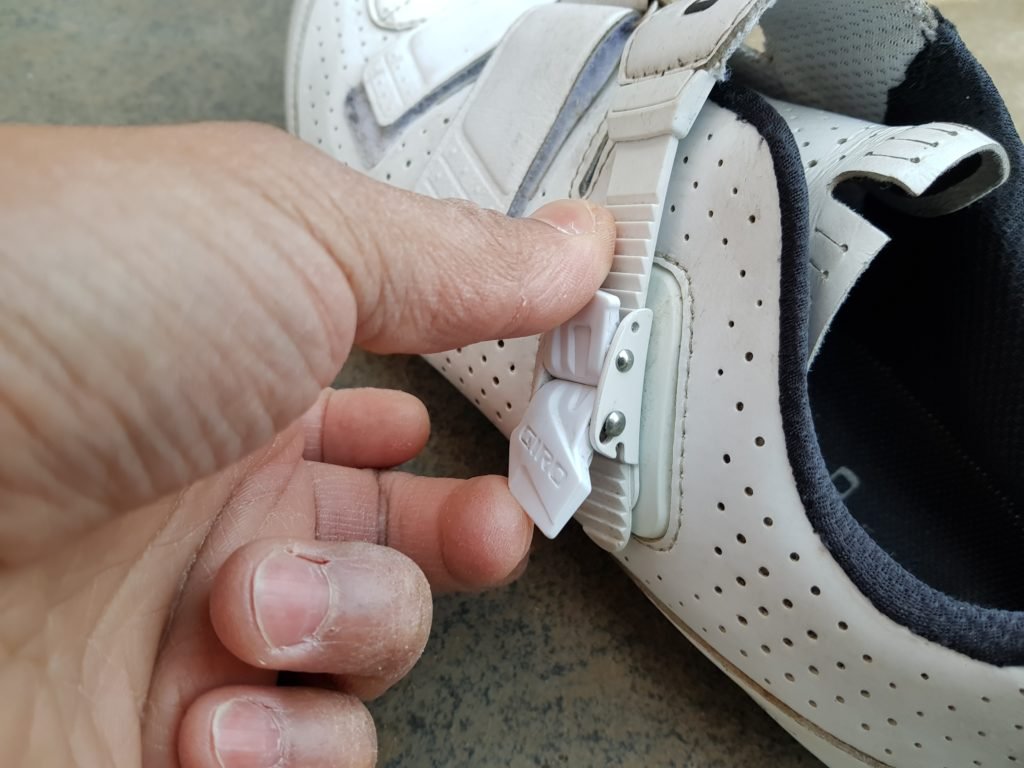 Laces - Historically, road cycling shoes were leather with laces. Now nearly a century later, laces are back and ever popular. Top brands like Giro, Mavic and dhb have all added lace-ups to their shoe ranges. Laces provide a sure-fit. However, unlike some of the other systems, you need two hands to do them up.
Laces - Historically, road cycling shoes were leather with laces. Now nearly a century later, laces are back and ever popular. Top brands like Giro, Mavic and dhb have all added lace-ups to their shoe ranges. Laces provide a sure-fit. However, unlike some of the other systems, you need two hands to do them up.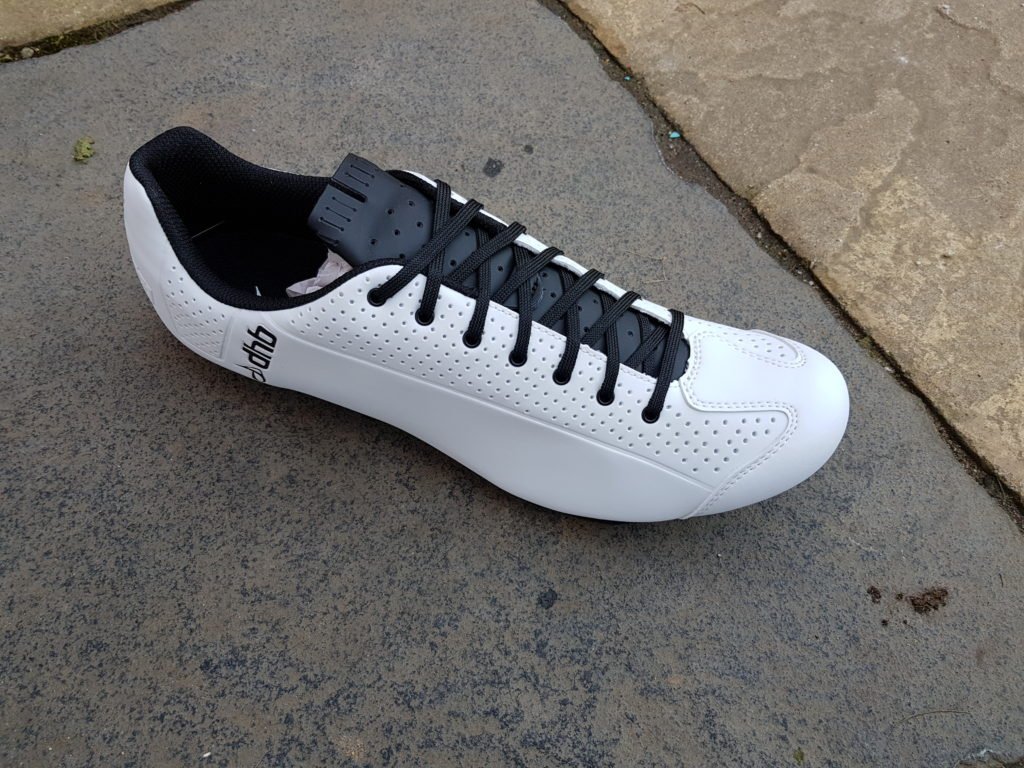
Boa/Dial - This is the most modern type of closure. The system incorporates a cable usually made from Nylon or a fine metal like Kevlar. This threads through to a (boa) dial fastening which draws the show closed when twisted. To loosen, you can either twist the dial in the opposite direction or pull the dial out, or press a button in the centre. This will all depend on the type of dial closure you have. The dial closure can provide a near-perfect fit as adjusts to 1mm increments. However, this type of closure tends to be found on more expensive shoes.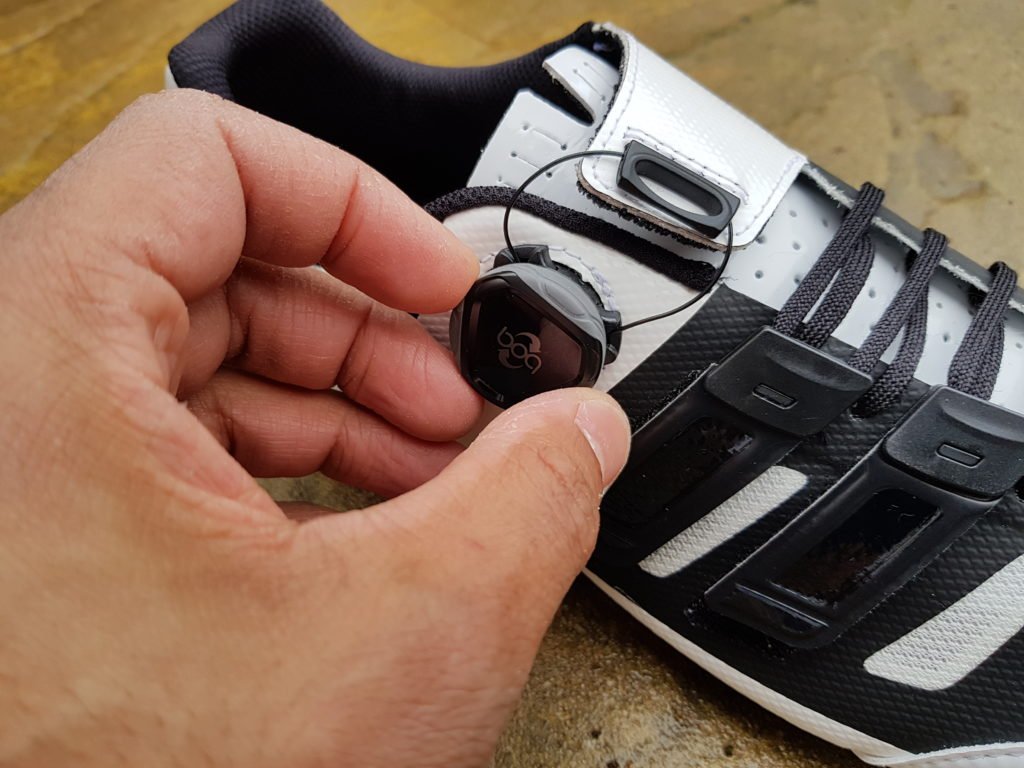
Sole
The sole of the cycling shoe is stiffer than that of everyday shoes like trainers for example. Lower cost or entry-level cycling shoes will usually have a Nylon sole. This is lightweight and molded to high level of stiffness. More advanced and often more expensive shoes will use a Carbon Fibre sole, or a Carbon composite sole. The later means that the carbon is combined with another material such as fibre glass or a plastic. This type of sole popular because it has a high strength and stiffness to weight ratio. This means that manufactures can produce a super-stiff shoe that is also very light weight. Road shoes will commonly have a flat, smooth sole that allows maximum contact with the pedal. This is to allow as much power transfer through your pedal stroke, with less effort. The downside to these types of sole is that they are not the best for walking in - despite often having a rubber heel grip.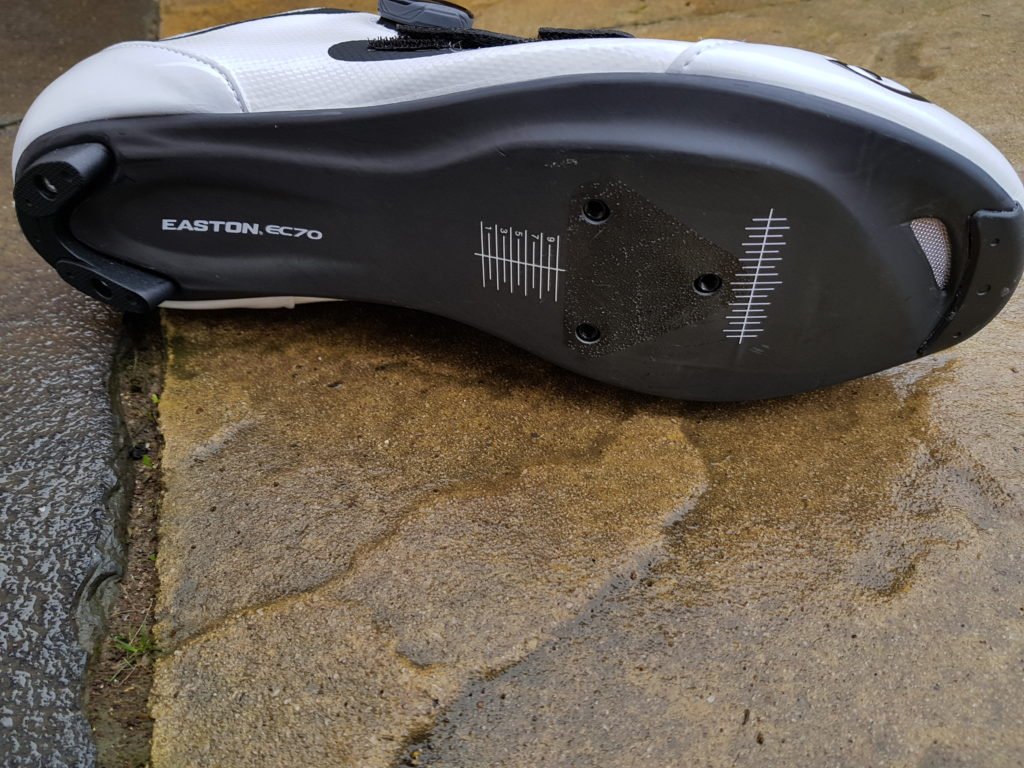 Like road shoes, off-road shoes or mtb shoes will have a Nylon sole at the lower end of the pricing scale and a Carbon sole at the upper end. However, this type of shoe has an additional outsole molded into a unique stud pattern. This is designed to provide maximum grip on the muddiest of trails and courses. The outsole is most commonly made from rubber, but entry-level shoes may use something like a Polyurethane plastic.
Like road shoes, off-road shoes or mtb shoes will have a Nylon sole at the lower end of the pricing scale and a Carbon sole at the upper end. However, this type of shoe has an additional outsole molded into a unique stud pattern. This is designed to provide maximum grip on the muddiest of trails and courses. The outsole is most commonly made from rubber, but entry-level shoes may use something like a Polyurethane plastic.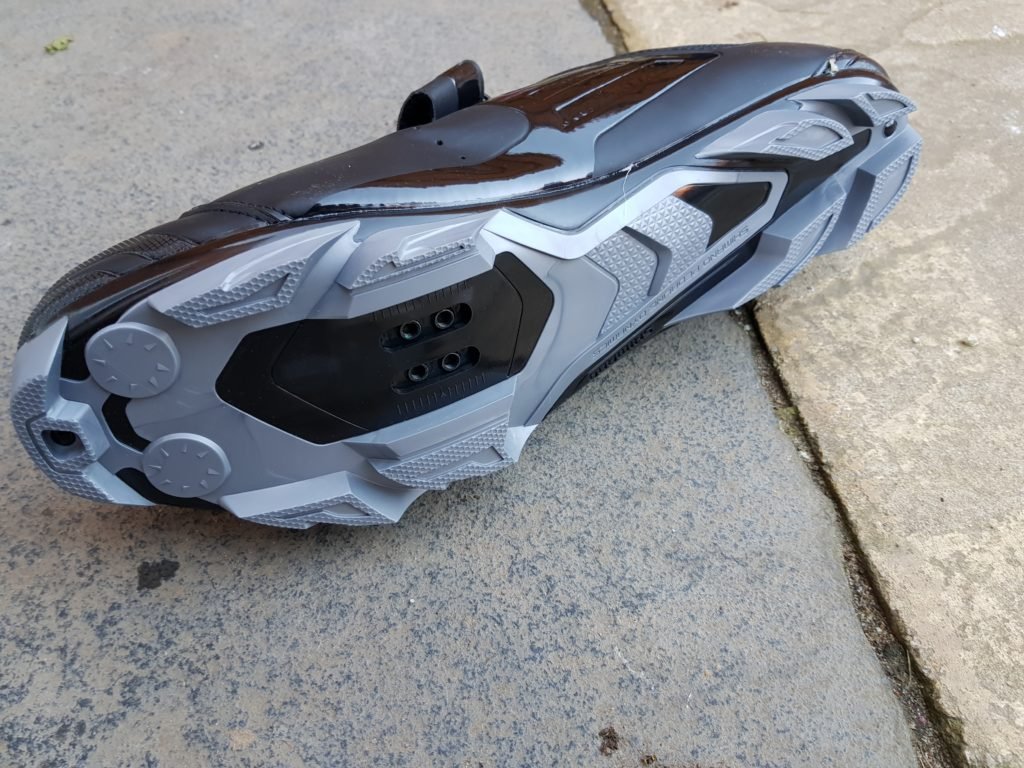 Although off-road shoes are build to be robust and grippy, what you gain in durability, you lose in weight. Off-road shoes tend to be heavier than road cycling shoes. This is down to the addition of the studded outsole.
Although off-road shoes are build to be robust and grippy, what you gain in durability, you lose in weight. Off-road shoes tend to be heavier than road cycling shoes. This is down to the addition of the studded outsole.
Cleats
Cleats for cycling shoes are commonly either 2 or 3 blots. Road shoes generally have a 3 bolt setup but can sometimes included a 2 bolt option. The idea of 3 bolt cleats again comes down to pedaling efficiency. 3 bolt cleats such as Shimano SPD-SL or Look's Keo or Delta have a wider platform, allowing for more power transfer through the pedals. 2 bolt cleats like the Shimano SPD or Crank Brothers are more commonly seen on the bottom of off-road shoes. The positioning of the bolt holes sits in a recess in the sole. This helps prevent them getting clogged up with mud, but it also makes the shoes easier to walk in. The exception to the 2 or 3 bolt rule is the brand Speedplay. Their cleats actually require a 4 bolt adapter. This is because the Speedplay pedals are small discs which the cleat clips onto rather than into.
2 bolt cleats like the Shimano SPD or Crank Brothers are more commonly seen on the bottom of off-road shoes. The positioning of the bolt holes sits in a recess in the sole. This helps prevent them getting clogged up with mud, but it also makes the shoes easier to walk in. The exception to the 2 or 3 bolt rule is the brand Speedplay. Their cleats actually require a 4 bolt adapter. This is because the Speedplay pedals are small discs which the cleat clips onto rather than into.
Women's Specific Shoes
A lot of cycling shoes are unisex in their design. However, most - if not all manufacturers offer female specific cycling shoes. Women's cycling shoes are available with all of the features on men's or unisex shoes, but allow for smaller sizing and often a narrower fit. The ever-growing popularity of professional women's cycling means the choice in cycling shoes for women is growing. Although it seems to still be a little way off the choice for men.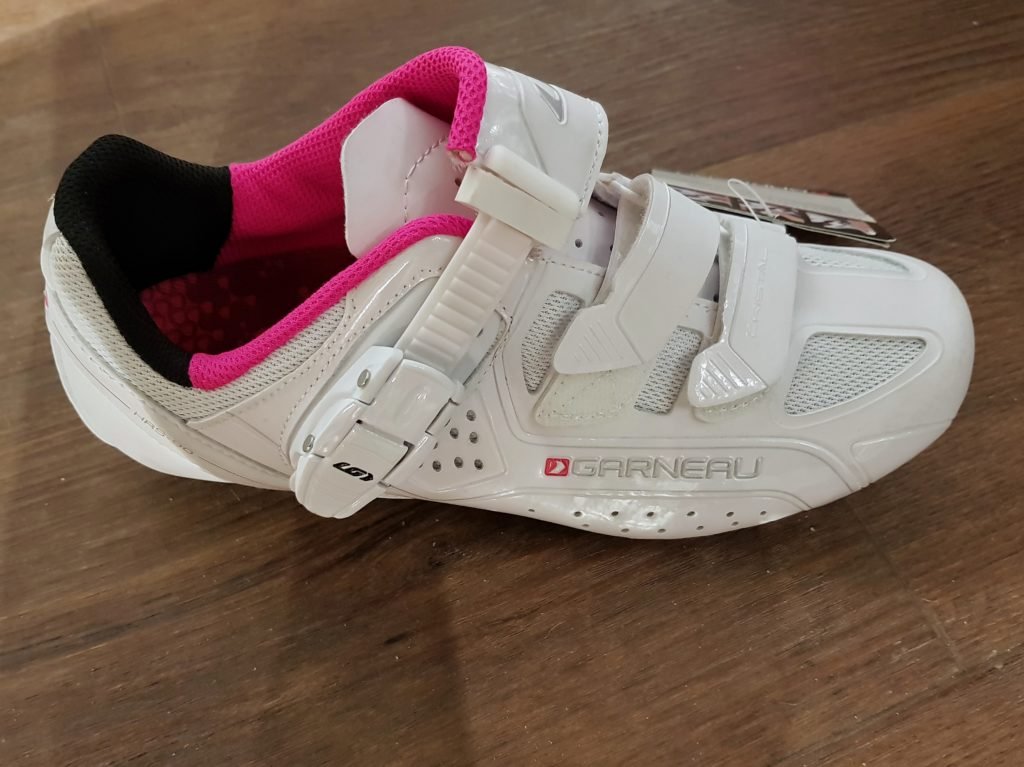
Conclusion
It's safe to say that there is plenty to think about when it comes to choosing cycling shoes. Thinking about the type of riding you are doing or plan to do is probably the most important place to start. It's always a good idea to 'try before you buy' where possible. There is such a difference in sizing between manufacturers and even between styles from the same manufacturer. Colour is a preference but obviously light or white shoes are going to be harder to keep clean. Once you have your shoes, if you are not used to clipping in and out, practice at home. If you have a turbo trainer, this is a good way to get used to the action. Alternatively, rest against a wall and practice clipping in and out as many times as you feel you need. Lastly, go out and enjoy your ride.

